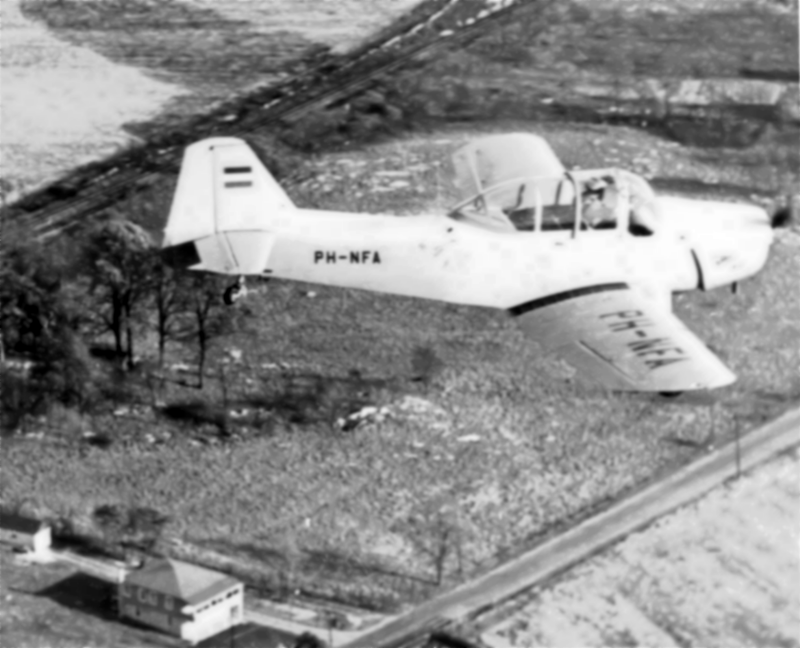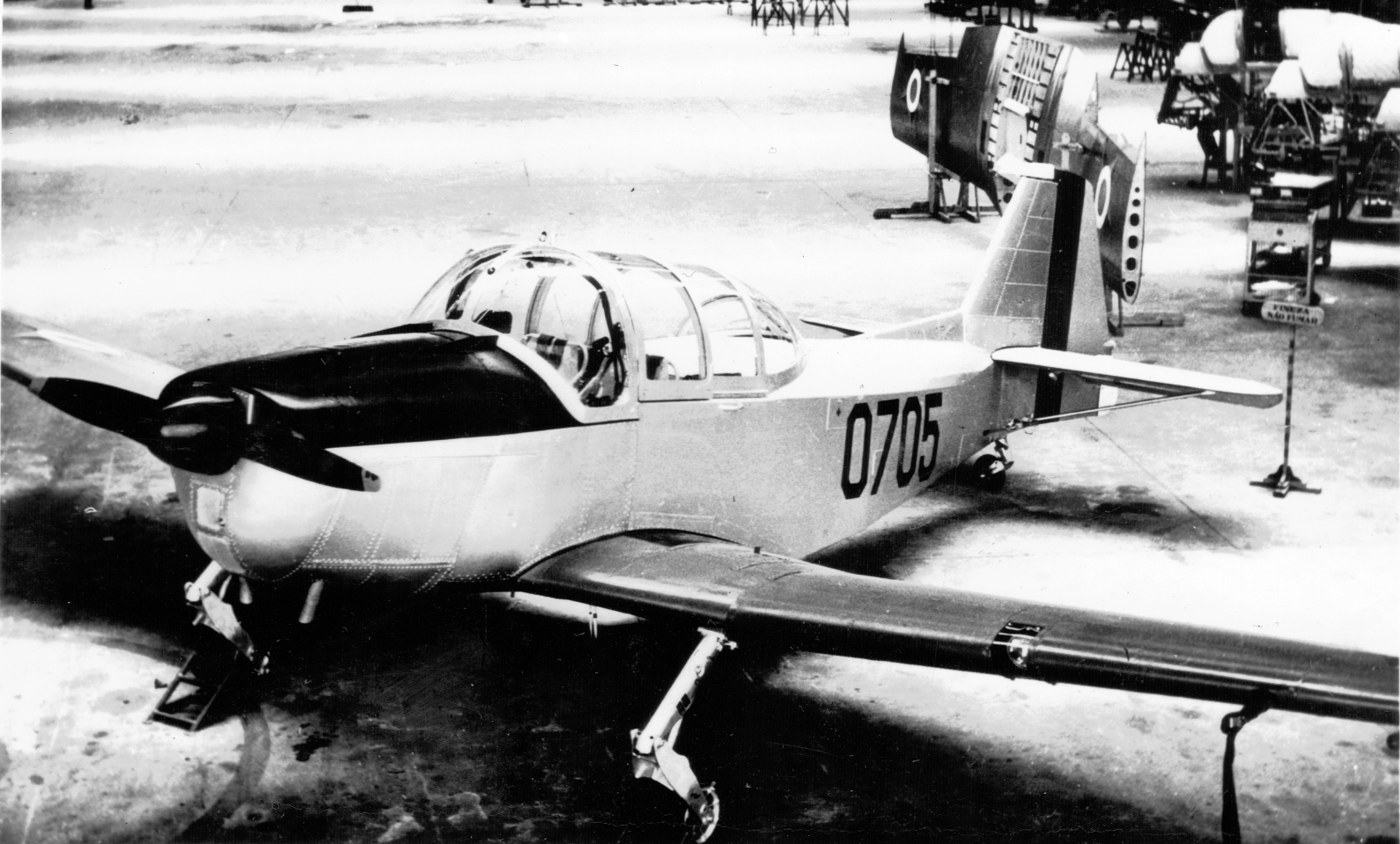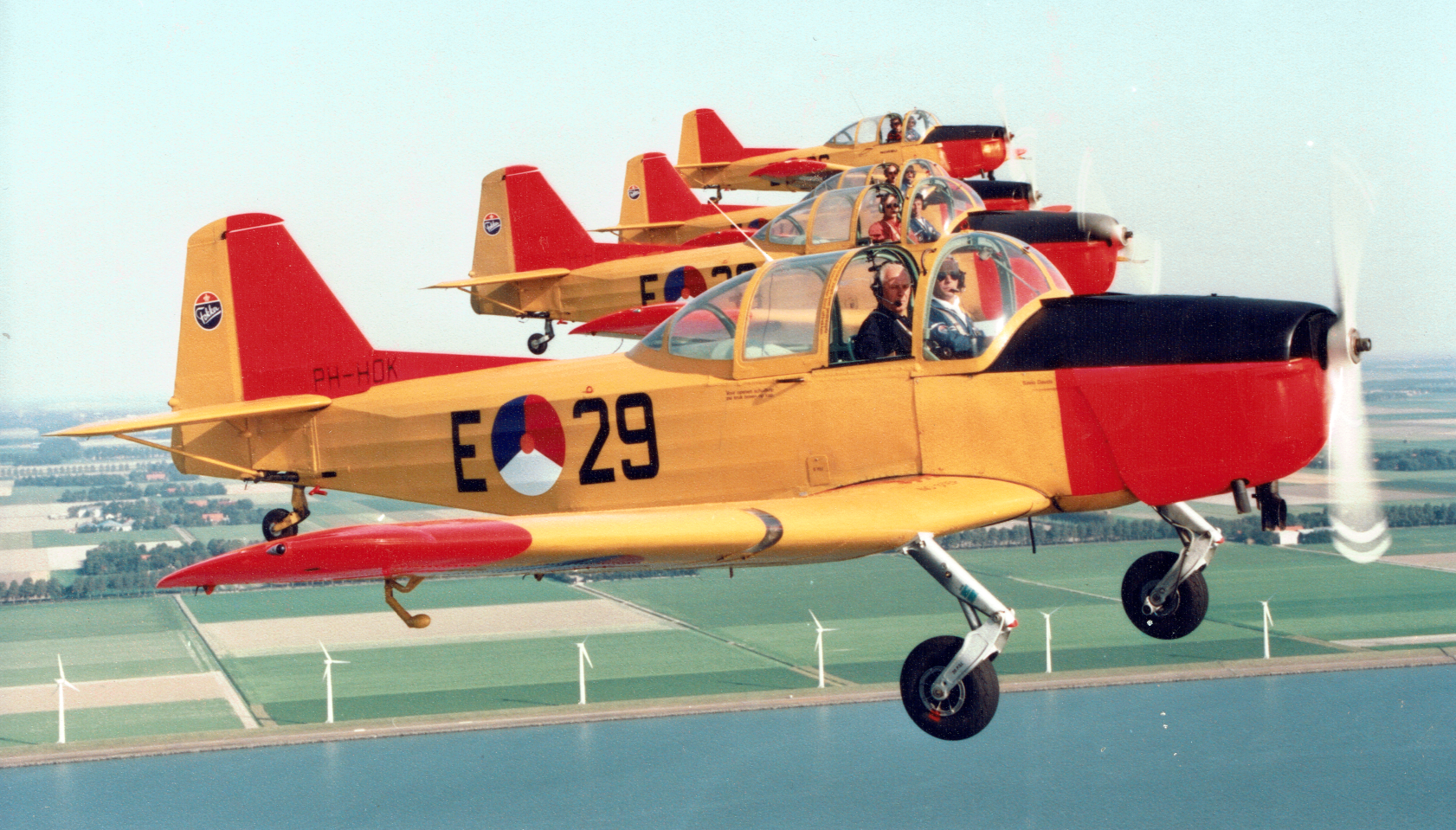Fokker S.11
Preliminary translation
The idea to develop a training aircraft arose at Fokker shortly after the 2e world war .
The Tiger Moth biplanes used in the Netherlands for basic flight training date from the 1930s and were very outdated.
Partly because the Air Forces also renew their air fleet after the Second World War, there was interest in a new elementary training aircraft, also at the LSK. (LSK is the abbreviation of Air Forces, the name KLu did not exist yet)
After a number of preliminary designs, design no. 223 at Fokker eventually resulted in the Fokker S-11 Instructor, as the aircraft was officially called. The "S" was the traditional designation for training aircraft types at Fokker.
It would be a low-decker with a somewhat pre-war construction,
a hull of welded tubular steel, then partly clad in plywood and completely clad in linen, with an all-metal wing, vertical tail and horizontal stabilizer.
The direction and elevators mounted in the vertical tail and horizontal stabilizer were also covered with linen.
A buckled non-retractable landing gear was fitted under the wings and the cockpit seats would be side by side and not one behind the other, as was customary in a training aircraft until then.
There are a limited number of photos on this page. This because we were allowed to publish a fantastic 'book' on our site.
Click here for the S.11 book, written by Henk Amstelveen.
Click on the photo to enlarge the photo












